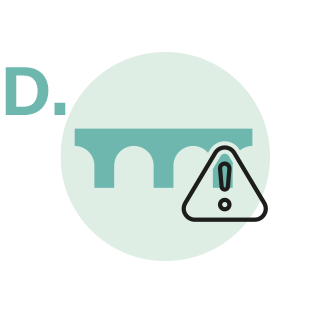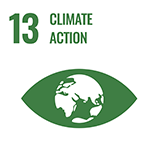Reducing Risks and Vulnerabilities from Glacial Lake Outburst Floods in Northern Pakistan

Summary
To address the increased Glacial Lake Outburst Flood risk posed by climate change, this project developed the human and technical capacity of public institutions to understand and address immediate GLOF risks for vulnerable communities in Northern Pakistan.
Outside of the the polar region, the Himalayas Karakorum Hindukush mountain ranges in Northern Pakistan are home to the largest glaciers in the world. Every year, melting snow and ice from this area contribute to the provision of water for lowland and distant populations, as well as countless other ecosystems goods and services. However, despite the many benefits, surrounding mountain communities also face the threats of numerous natural hazards. Such is the case of glacial lake outbursts floods (GLOFs), which on average occur every 3-10 years in the Himalayan region with varying degrees of socio-economic impacts, and which are expected to increase in incidence due to the fast melting of glaciers linked to increasing atmospheric temperatures.
This project was designed as a pilot project and had the main objective to reduce climate-change-induced risks of GLOFs of the Gilgit-Baltistan and Chitral districts in Northern Pakistan, as well as enable communities and decision makers (national, provincial, and district authorities) to prioritize and implement climate adaptation measures. It was executed from 2011 to 2015 by the Government of Pakistan’s Climate Change Division under the Cabinet Secretariat of Prime Minister through the Project Management Unit (PMU) with support from the United Nations Development Programme Country Office. Measures sought to achieve four principal outcomes through four main components:
- Component 1: Strengthened Institutional capacities to implement policies, plans, and investments that prevent human and material losses from GLOF events in vulnerable areas of Northern Pakistan.
- Component 2: Improved access of disaster management planners and policymakers to knowledge, information, and research on GLOF risks.
- Component 3: Reduced human and material losses in vulnerable communities in the Northern areas of Pakistan through GLOF early warnings and other adaptation measures.
- Component 4: Project experiences documented and replicated.
Three approaches were employed for achieving the project’s objectives:
- Policy improvement: Including the revision of the National Disaster management plan and National Disaster Management (DRM) act to incorporate GLOF issues, the development of DRM, and Disaster Risk Reduction plans at the national and provincial levels incorporating GLOF, and policy recommendation for the Chitral and Gilgit provinces. Planning exercises were encouraged to be based on evidence through the conduction of different studies on various subjects related to the vulnerability of the region and disaster risk reduction.
- Awareness generation: This involved the creation of a project website, the conduction of awareness programs on radio and TV, the realization of various seminars, workshops, training, site visits, and exchange visits, as well as the development of bio-engineering and plantation demo plots.
- Infrastructure development: Such as the creation of weather stations, rain gauges, sensors and observatories, and early warning systems. As well as the construction of check dams, flood protection walls and bridges, slope stabilization, path clearing of rivers and streams, plantation, mock drills and development of access routes.
Overview
- Location:
- Implementation sites:
- Single country
- Single location
- Mountain region:
- Himalayas, Karakorum, Hindu Kush mounatin ranges
- Province:
- Gilgit-Baltistan district, Chitral district
- Site locations:
Communities within the Gilgit-Baltistan and Chitral districts
- Solution scale:
- Ecosystem type(s):
- Solution type(s):
- Climate impact(s) addressed:
- Impact time-scales:
- Co-benefits:
- Implementation timeline:
- 2011 - 2015
Solution details
Main beneficiaries & outcomes
Main beneficiaries of the solution comprised local community members, organizations, and authorities in Northern Pakistan living in proximity to glacier lakes and glacier-fed rivers. Benefits were widely available and ranged from the reduced risk of natural disasters, increased sustainability, as well as raised awareness and knowledge on GLOFs.
Large efforts were made to include women in the project’s activities and to provide them with practical knowledge to safeguard them during disaster events. Local women participated in 107 awareness workshops and were represented in the village Disaster Risk Management (DRM) committees. However, due to work and cultural barriers, women were not considered in other activities like the implementation of early warning systems, repairing of the trail, construction of walls, bio-engineering, glacier monitoring, and training on rescue operations.
In addition, the project also conducted DRM training for the disabled population, and included capacity-building activities for disabled and elderly persons through the organization of GLOF awareness sessions, and by providing the necessary equipment to minimize risk during disasters.
Planning and implementation
The United Nations Development Programme (UNDP) functioned as the implementing agency. It was responsible for the completion of all activities including procurement, recruitment, progress monitoring, as well as financial disbursement.
To ensure broad stakeholder participation, and to create a flexible and enabling environment for innovation, the project was implemented following the National Implementation Modality. During the first steps of the solution planning, the development process involved various stakeholders including non-environmental agencies. Moreover, consultations were held with the then Ministry of Environment, the Global Change Impact Study Centre, and other pertinent government departments for discussing the project concept and select implementation sites. The communities from the Gilgit-Baltistan and Chitral districts also took part in the consultations, with numerous community representatives (including women and disabled people) participating in the discussions.
To coordinate and manage project activities, a Project Management Unit was formed. This body assured the timely achievement of targets as well as adequate management, program planning, and reporting. Later, and to further involve the local population in the implementation of solutions and ensure the sustainability of interventions, the Community Based Disaster Management Committee, the District Emergency Response Cell, the Tehsil Emergency Response Cell, the Community Based Disaster Risk Committee, and several community-based hazard watch groups were formed. Finally, community members also participated in the development of structures and early warning systems which was expected to help for its continuity in the future.
Finance
The total budget for the project was US$ 7,600,000, of which US$ 3,600,000 was provided by the Adaptation Fund in the form of a grant, US$500,000 was contributed by the United Nations Development Programme Country Office (UNDP CO), and US$3,500,000 came from a kind contribution from the Government of Pakistan. Financial support and monitoring were also given by the UNDP CO throughout the duration of the project.
Quarterly project progress reports rendered useful information regarding the status of the solutions based on the financial disbursements.
|
|
Amount |
|
Component 1 |
US$ 100,000 |
|
Component 2 |
US$ 250,000 |
|
Component 3 |
US$ 2,790,000 |
|
Component 4 |
US$ 100,000 |
|
Project execution cost |
US$ 360,000 |
|
Total Grant Amount |
US$ 3,600,000 |
|
Co-financing by Government of Pakistan |
US$ 3,500,000 |
|
Co-financing by UNDP |
US$ 500,000 |
|
TOTAL PROJECT COST |
US$7, 600, 000 |
In a final evaluation (attached document), the project was considered extremely cost-effective given that it produced all of its planned deliverables within the original budget. At the end of the implementation of measures, only 87% of the total budget was employed, with an actual total cost of US$6,826,662.
Innovation
This Project demonstrated several innovative approaches, particularly regarding the involvement of community members in the establishment and management of early warning systems. In the terminal evaluation report (to be found in the attached documents at the end of the solution description), UNDP considered that such an innovative approach could be expanded within the region or replicated in other parts of the country. One of the most important aspects that allowed this innovative strategy was the securing of broad stakeholder participation.
Performance evaluation
To assess the performance of the project, a Terminal Evaluation was carried out at the end of the implemented activities by independent international and national consultants as part of the Monitoring and Evaluation plan of the project. It was initiated by UNDP Pakistan and conducted over a period of 30 days between October 1st and November 30th in2015. The main purpose of the exercise was to measure the effectiveness and efficiency of Project activities concerning the stated objectives and to collate lessons learned. The evaluation used a participatory approach in which extensive face-to-face interviews with project management and technical support staff, face-to-face interviews with local stakeholders, interviews with governmental authorities, fields visits to the project areas, and a thorough review of project documents were done.
Criteria taken into account in the evaluation included:
- Relevance: the extent to which the activity is suited to local and national development priorities and organizational policies, including changes over time, as well as the extent to which the project is in line with the Adaptation Fund Operational Programmes or the strategic priorities under which the project was funded.
- Effectiveness: the extent to which an objective has been achieved or how likely it is to be achieved.
- Efficiency: – the extent to which results have been delivered with the least costly resources possible.
- Results: the positive and negative, and foreseen and unforeseen changes and effects produced by interventions. Results include direct project outputs, short-to-medium-term outcomes, and longer-term impacts including global environmental benefits, replication effects, and other local effects.
- Sustainability: the likely ability of an intervention to continue to deliver benefits for an extended period after completion. In the environmental, financial, and social aspects.
Long term project sustainability and maintenance
One of the main strategies used in the project to ensure the extended sustainability of the implemented measures was working directly through existing government structures. Rather than setting parallel implementation structures, the project worked directly with the Ministry of Climate Change. Furthermore, the capacity enhancement efforts, the commitment from government agencies, and the generation of policy backup also contributed to making the initiative more sustainable in the long term. Institutions of different levels and local communities were empowered thanks to improved experience and training, a well-equipped environment, effective ownership development, and increased engagement, participation, and motivation. In addition, the awareness-raising among community members had the intention to promote a better response to GLOFs and adaptation to the growing climate change pressures in the future.
In the initial steps of the planning process, the vulnerability of local communities in the northern areas of Pakistan was assessed based on GLOF hazard exposure. However, due to the expected limited scope of construction activities in the GLOF project, only initial environmental examinations were conducted. On the other hand, the solution took precautions to safeguard the installed equipment as according to the final project evaluation, apart from that, there were no other assumable environmental risks associated with the sustainability of the solution. Finally, by the end of the project, at least two Community-based Organizations were trained in the operation and maintenance of the early warning system to ensure its continued functionality. Moreover, the villages have a Morn system (traditional) which practices committing labour for repairing and maintenance of trails, irrigation canals, and other infrastructures.
Capacities for design and implementation
Knowledge
The use and generation of knowledge were fundamental for the development of the project’s measures. Specially because the solution sought to address the knowledge gaps that existed in the project areas. Starting from the first activities related to the solution, it was clear that updated and comprehensive knowledge of glaciers and glacial lakes was of great importance to understand and manage risks of GLOFs in the country and for ensuring the adequacy and success of the measures. During the planning process, implementers paid close attention to enrich the knowledge base and building solutions supported by current information. To this purpose, glacial lake inventories were established, hazard and vulnerability maps were developed, and studies on various subjects related to disaster risks were done. This included the generation of disaster profiles for project sites, case studies on best practices, biodiversity studies, and bio-engineering, as well as comparative studies of glacial lake risk management and reduction in different countries like Nepal, China, and Bhutan, etc. Moreover, the project also integrated indigenous traditional knowledge which provided a strong base for enhancing the use of scientific methods in the rural environment.
The sharing of knowledge was achieved through various activities like the development of standard operating procedures, disaster risk reduction, and disaster risk manuals, such that will be useful for the future management of risks. Through knowledge generation and sharing, local communities, institutions, and governments have begun to understand the link between development activities and their potential impact on climate change which triggers GLOF risks, resulting in a positive change in thinking and planning practices.
Technical assistance on the impacts of climate change in Northern Pakistan with specific reference to GLOF risks was provided by the Global Change Impact Study Centre.
Technology
Technology capacities were useful to the design and implementation of the project. In the initial planning process, the Institute of Geographical Information Systems assisted implementers in generating maps of the project areas and acquiring the satellite imageries of the project sites. Moreover, available technologies were also employed in the execution of solutions given that the project looked to integrate modern and traditional adaptive measures by equipping the traditional early warning systems with modern science-based techniques to address GLOF issues. Some of the most technically demanding solutions implemented were the establishment of weather stations, rain gauges, sensors, and observatories.
Political / Legal
Some already available policies and strategies in Pakistan were significant to the addressing of GLOF risks under the project activities. In particular, Pakistan’s National Environment Policy, the second Poverty Reduction Strategy Paper, provincial sustainable development strategies, and district development plans have given priority to address the risks and vulnerabilities from climate change-induced hazards. Likewise, the National Disaster Management Framework of Pakistan had raised GLOF risk issues and emphasized efforts to address them, while the Task Force on Climate Change (TFCC) formed by the Planning Commission, has pointed out Gilgit-Baltistan as one of the most vulnerable areas to GLOF issues.
The role and motivation of governmental authorities in Pakistan were also of great importance to the project implementation. Not only was this solution executed by the Climate Change Division which had a clear mandate related to climate change and adaptation strategies but was also supported by several other governmental authorities at all levels. They included:
- The Ministry of Environment, which took the lead in designing and implementing the National Environment Action Plan and played a lead role in the implementation of the project.
- The Pakistan Meteorological Department, which is both a scientific and service department and provided guidance and support in the establishment of the early warning system.
- The Global Change Impact Study Centre. It is in charge of giving overall policy guidance and technical assistance on the impacts of climate change in Northern Pakistan, with specific reference to GLOF risk assessment.
- The Pakistan Council of Research on Water Resources supported with technical assistance and information about the glacial lakes in the project areas.
- The Earthquake Relief and Rehabilitation Authority. It helps in incorporating GLOF risk reduction measures in the national disaster management framework and plans.
- The Federal Flood Commission. Working in close collaboration to integrate GLOF risk considerations into national policies and strategies.
- District and Provincial government in the target areas. They provided overall support and guidance in the implementation of activities.
- The Ministry of Foreign Affairs established international linkages of the project and emphasized policy recommendations.
Moreover, after the realization of the project, government authorities expressed their interest to replicate/upscale the lessons learned from this project in other areas. At the same time, the Ministry of Environment has given priority to GLOF hazards and is working to generate support to continue the outcomes of the project and replicate it in other areas.
In addition to this, the activities conducted under the project also had the intention to urge and motivate in the improvement and development of policies. This included the revision of the National Disaster Management (DRM) plan and National Disaster Management act to incorporate GLOF issues, the development of the National and provincial level DRM plans and Disaster Risk Reduction plan incorporating GLOF, and policy recommendations for the Chitral and Gilgit districts.
Institutional
The project development process involved the collaboration of numerous stakeholders, including non-environmental agencies and diverse governmental departments. The project design phase comprised of a thorough analysis of the institutional capacities of partners and their interests. Close coordination was maintained with the then Ministry of Environment in Pakistan in the different project phases, and a Project Steering Committee was established at the federal level to provide strategic guidance to the National Project Director and the local Project Management Committees for the implementation.
Some of the key partnership arrangements established with non-governmental institutions include the Pakistan Meteorological Department (PMD) which was in charge of updating the GLOF inventory of Northern Pakistan and the establishment of community-based early warning systems in the Bagrot and Bindogol Valleys. Similarly, the National Center of Excellence on Geology of the University of Peshawar assisted in carrying out geological and geophysical investigations in the project areas to establish mass balances of glaciers and to locate potential hazardous glacial lakes with ground-penetrating radar. The local NGO FOCUS Humanitarian Assistance, with has broad experience with community-based development activities, was involved as a sub-contractor for PMD and carried out Hazard, Vulnerability, and Risk assessments of the pilot areas. Through participatory assessments, it had developed hazard and vulnerability maps of Bagrot and Bindogol Valleys. Likewise, community-based organizations, like the Dubani Development Organization in Gilgit-Baltistan, facilitated the planning and implementation of the project activities.
Further to this, the strengthening of institutional capacities was one of the four main outcomes that the project looked to achieve. Different institutional arrangements influenced the success of the project by enabling coordination and collaboration across the relevant stakeholders. Such is the case of the establishment of Disaster Risk Management Committees (DRMC), DRMC offices, and Community-based Disaster Risk Committees (CBDRC) in the project sites, and the formation of 26 Village-based Hazards Watch Groups and 14 Indigenous early warning systems. To help networking with like-minded institutions at the regional, national, and global levels, awareness programs on radio and TV were employed.
Socio-cultural
The social context in the implementation region was very important as it facilitated the overall collaboration among stakeholders and served to support the execution of activities. In particular, the local communities in the Bagrot and Drongagh valleys were actively involved in the planning, implementation, and analysis functions performed by the project. Besides, the established hazard watch group and hazard management committees were very important for the effectiveness and sustainability of the measures.
Over the duration time of the project, various seminars, workshops, training, site visits, and exchange visits were used to generate awareness among the local population. Meanwhile, bio-engineering and plantation demo plots were done for encouraging communities and institutions to work in controlling landslides and address greenhouse gas problems. The local population actively supported the development of early warning systems and the construction of physical structures like wall constructions. This participation was important to help the continuity of the project outcomes in the future, and provide participants with relevant skills that will serve them to find a job in other surrounding areas.
Outlook & Scalability
Barriers and adverse effects
According to the terminal evaluation report, no major barriers or constraints were identified in the project that prevented the achievement of outcomes. Yet, the main two problems identified by the analysis included the non-commitment from the Climate Change Division and the Pakistan Meteorological Department to cover the operation costs of early warning systems, other equipment installed, and field visits, and the fact that by the time of the terminal evaluation, no guaranteed commitment from any non-governmental/development partners was available for replicating lessons from this project to other areas in the country.
At the beginning of the project, the project implementation was very slow given that the National Project Director was changed five times in the first two years. However, after appointing a new Project Director, the process went smoothly. At the same time, due to such an initial delay, there was a time constraint at the end of the project to accomplish all tasks. This was solved by making an extension from 30 April 2015 to 30 November 2015 to the closing date.
In the solution implementation period, project staff members conducted meetings to discuss on progress and constraints of the project on an almost daily basis, helping among other things, to maintain a close working relationship. Furthermore, the main risks were identified in regular risk reports along with adequate management responses and a person accounted responsible to them (considered the risk “owner”), who in most cases differed from the person who identified the risk.
Finally, regarding the participation of the local population in the project implementation, cultural aspects represented an important barrier that prevented the inclusion of women in laborious physical activities. Nonetheless, with cultural sensitivity, women’s participation was always made sure in other activities.
Transformation and future outlook
This project supports fundamental change in climate change adaptation in mountain regions by addressing one of the most relevant issues and hazards in glaciated regions. Thanks to the different measures implemented, and the rise of awareness among local stakeholders, the project has helped to secure the sustainability of the solutions in the long term and increase the overall preparedness of local authorities and community members which appear the most vulnerable against GLOF related hazards. Added to this, under the current and expected climate change scenarios, these types of projects are of paramount importance in mountain regions as the fast melting of glaciers, escalates the probabilities of GLOF events. The creation of appropriate policies, updated knowledge, and development of early warning systems is an outstanding solution to cope with these issues.
Potential for upscaling and replication
Thanks to the success of this project, in 2016, the government of Pakistan, with the support of UNDP, decided to upscale the solution to a total of ten districts in the Northern Part of the country, with financing provided by the Green Climate Fund (GCF). The “Scaling-up of GLOF risk reduction in Northern Pakistan (GLOF-II)” project was created as a continuation of the “Reducing Risks and Vulnerabilities from GLOF in Northern Pakistan” project. Its implementation started in 2017 and is expected to be completed by July 2022. Measures include the revision of policies to incorporate GLOF risk reduction, the improvement of community preparedness and disaster response, the construction of engineering structures, the creation of weather monitoring stations, support for the development of sustainable livelihoods in project areas, etc.
Finally
Acknowledgments
This survey was elaborated based on the Report on the Terminal Evaluation Mission report for the project “Reducing Risks and Vulnerabilities from Glacial Lake Outburst Floods in Northern Pakistan” elaborated in line with the Monitoring and Evaluation plan. Such a report was elaborated in 2015 by the independent international consultants Dr. Arun Rijal and Dr. Jawad Ali.
The solution description reflects the authors’ views and not those of the report authors, the United Nations Development Program, the Government of Pakistan, or the project collaborators. Julia Aguilera Rodriguez filled the survey, while Simon Allen revised the solution description.









(0) Comments
There is no content